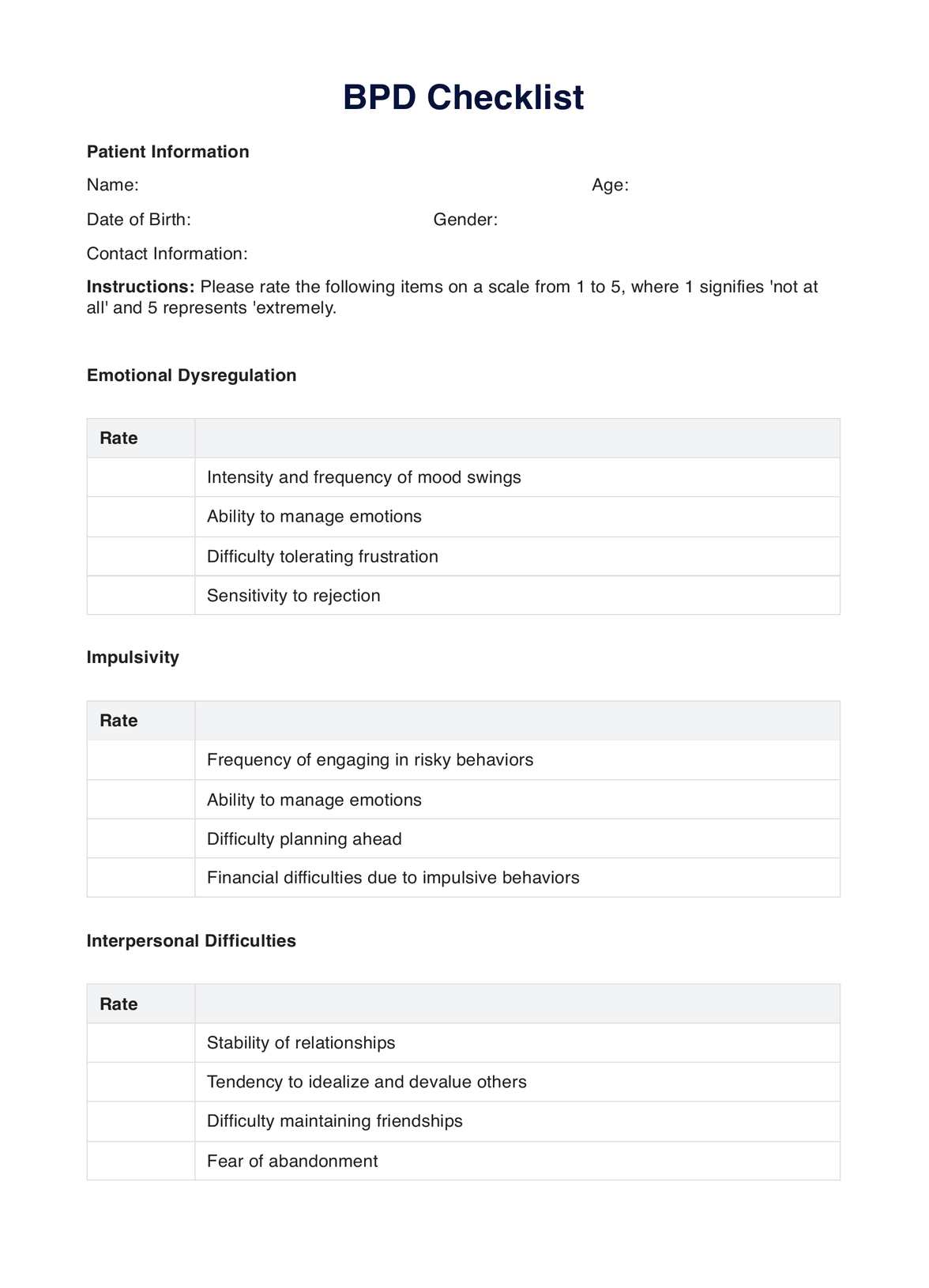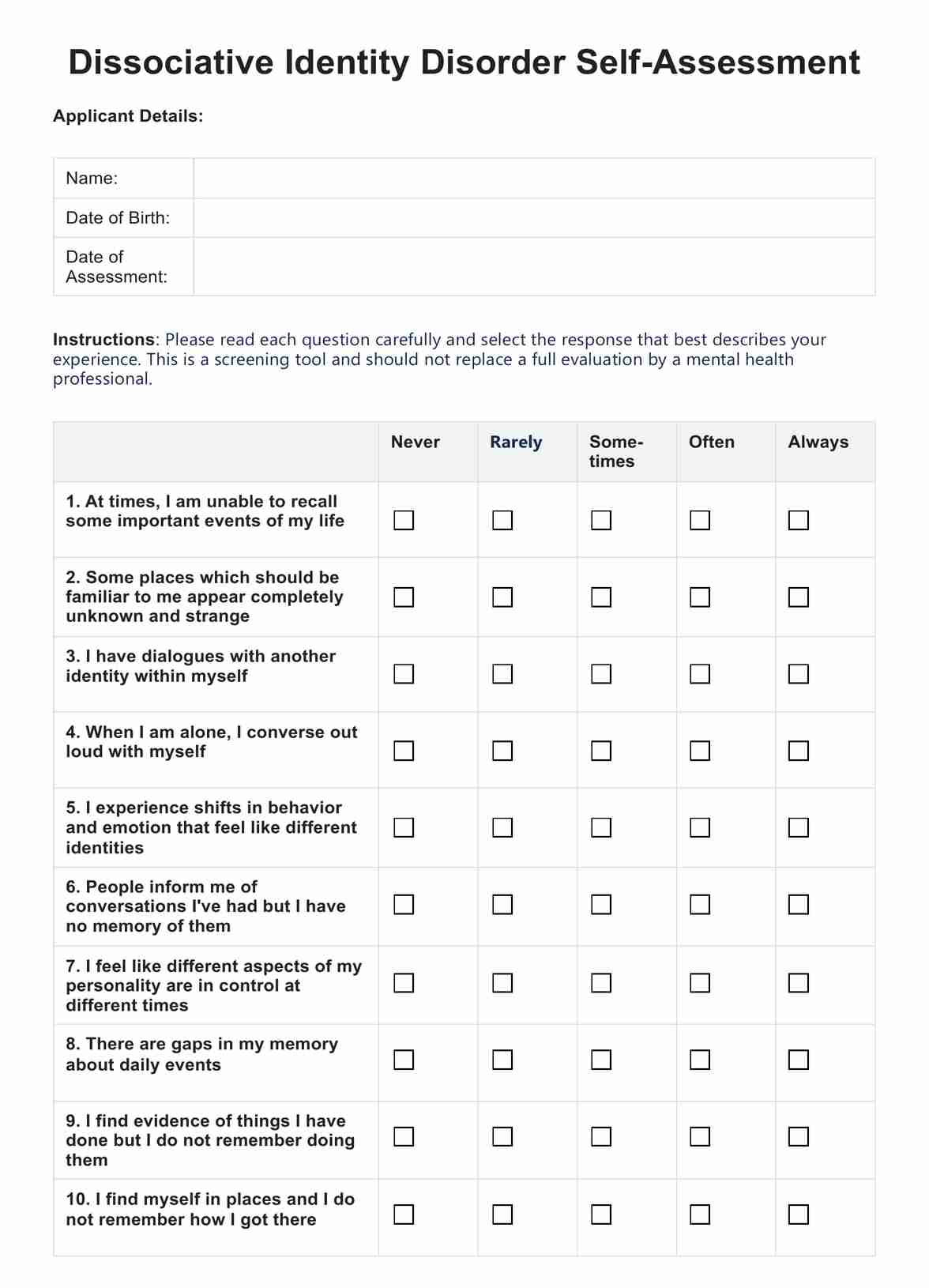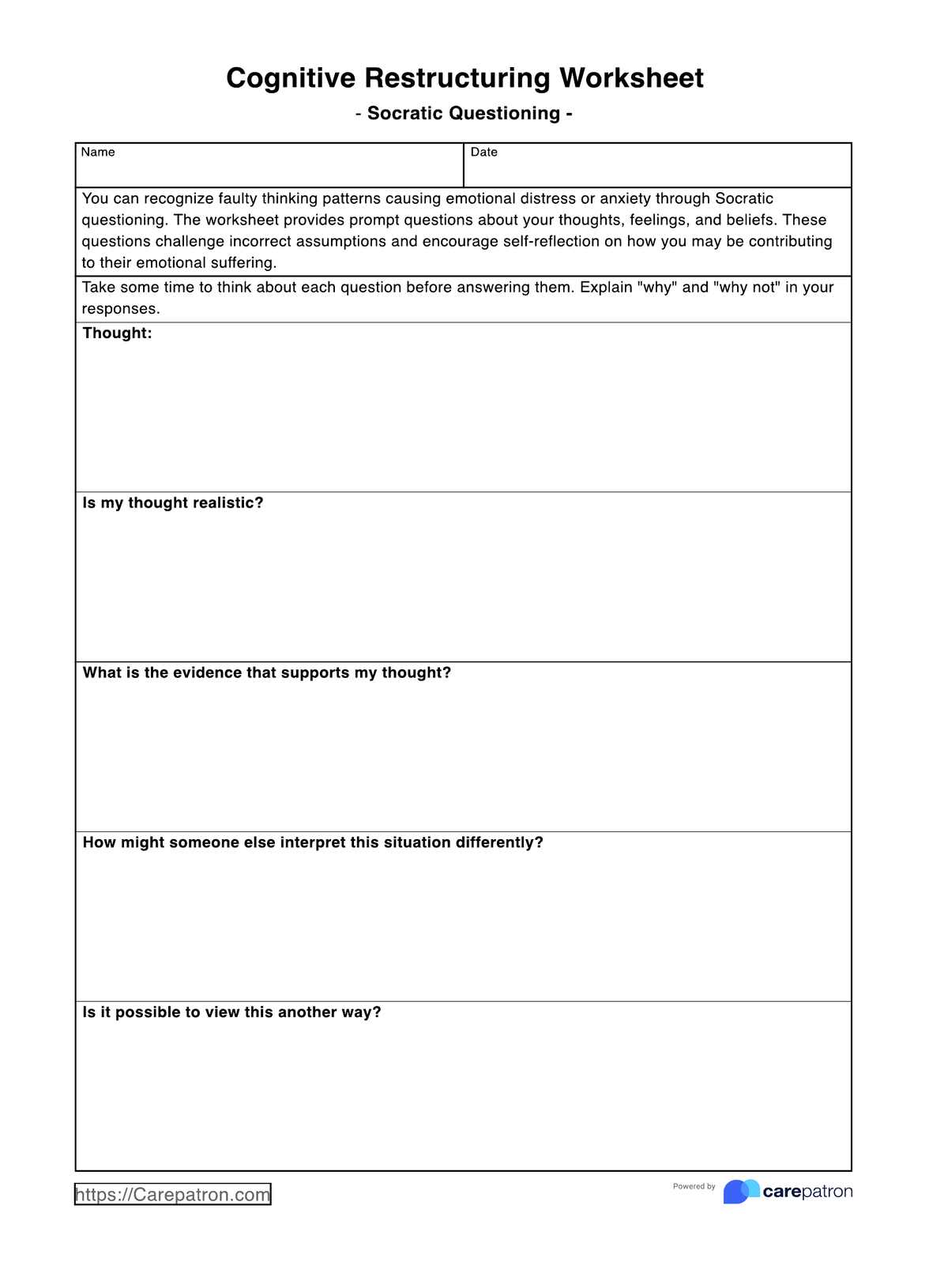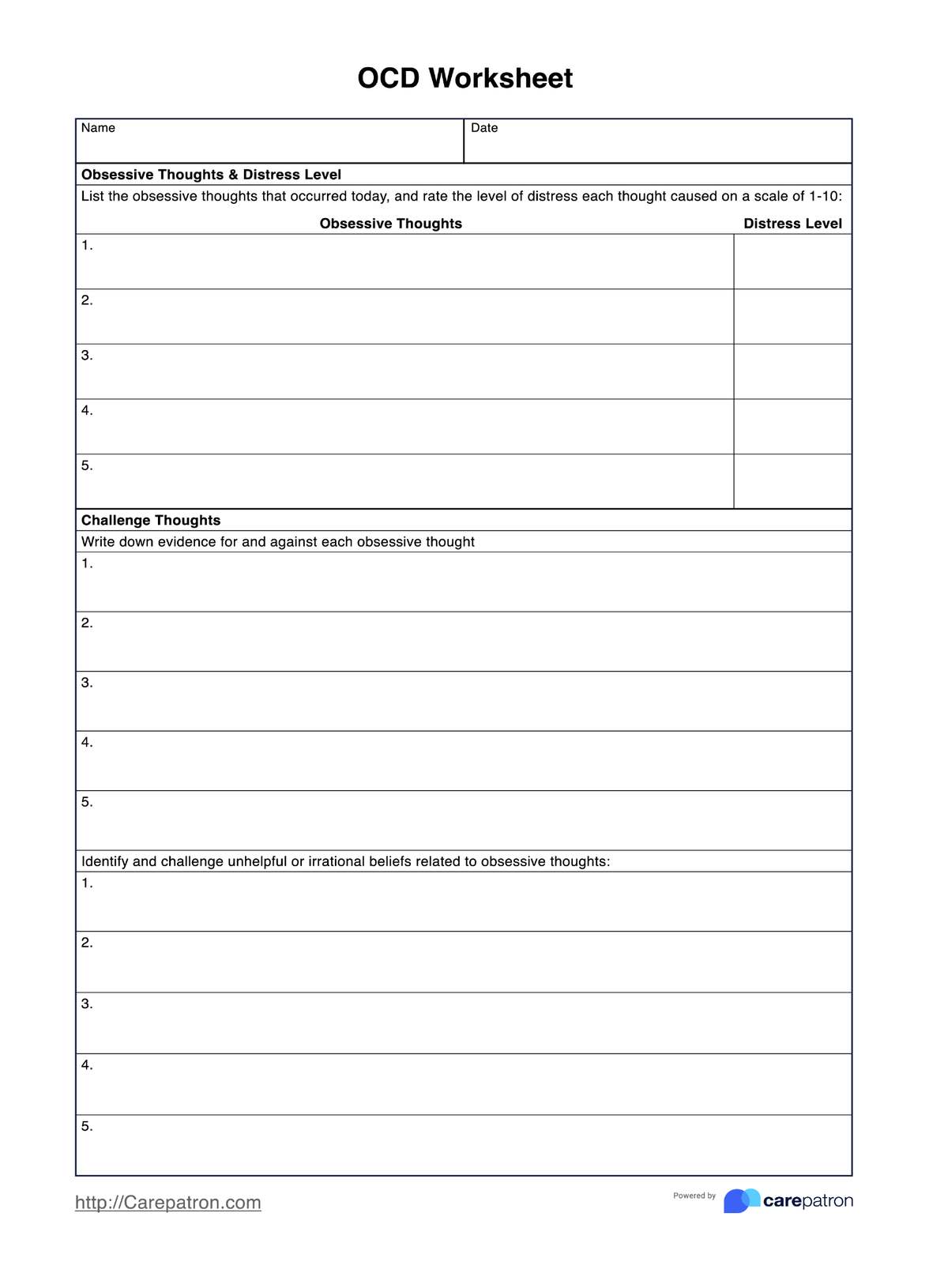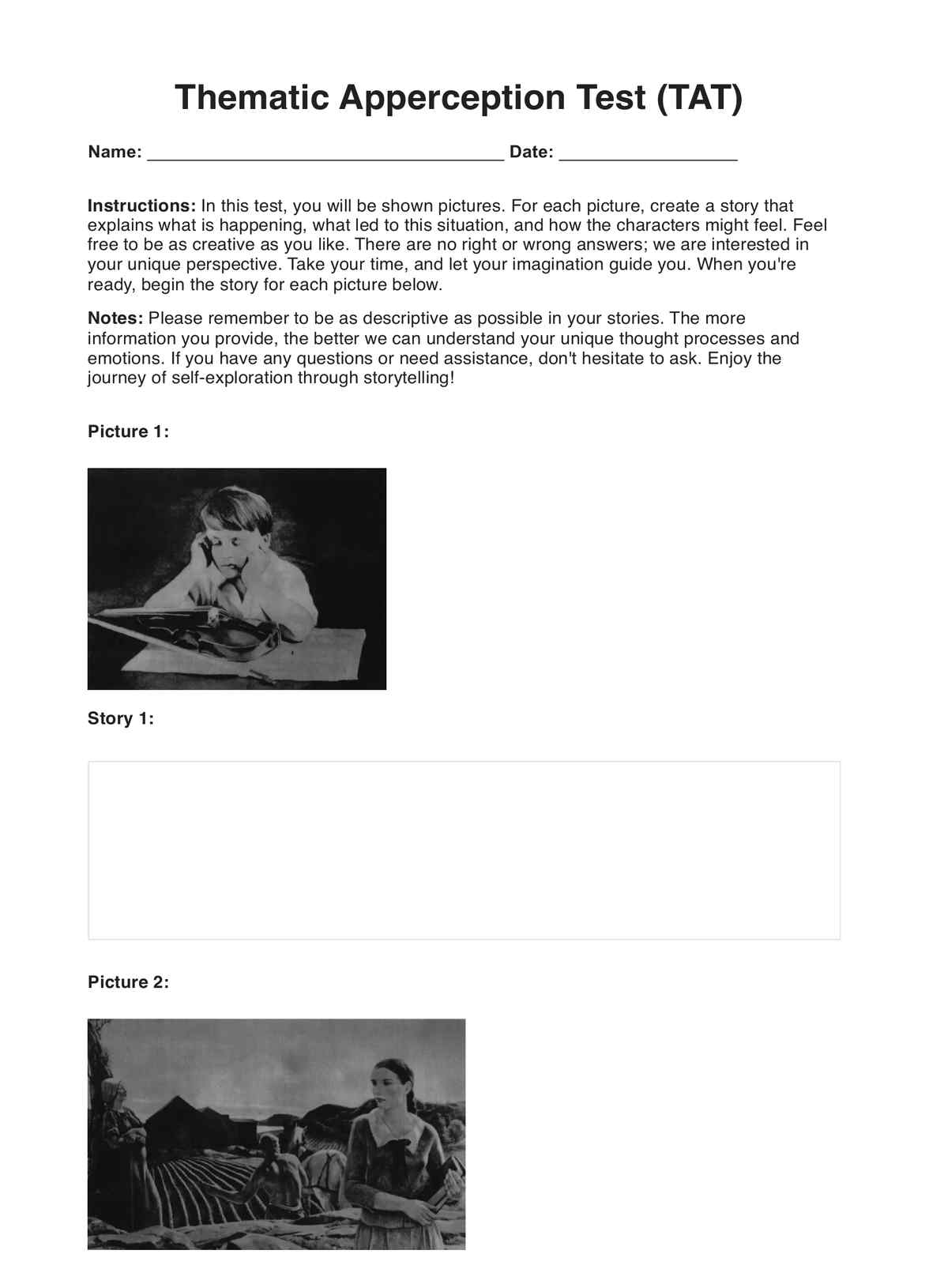Spence Children's Anxiety Scale - Child Report
Assess anxiety symptoms in children and adolescents through Spence Children’s Anxiety Scale - Child Report. A free PDF can be downloaded here.


What is the Spence Children’s Anxiety Scale - Child Report?
The Spence Children’s Anxiety Scale (SCAS) is a psychological assessment tool developed by Dr. Susan Spence to evaluate the severity of anxiety symptoms in children aged 8 to 15. It was designed in line with the dimensions of anxiety disorder outlined in the DSM-IV, such as separation anxiety, social phobia, obsessive-compulsive disorder, panic/agoraphobia, generalized anxiety, and fears of physical injury.
Anxiety is a natural and normal brain response to threats or danger. It is usually characterized by fear, worry, or uneasiness about events that may appear uncertain or challenging. It is not necessarily pathological. The right amount of anxiety is a crucial survival stimulus that facilitates productivity. It only becomes pathological when experienced at severe levels, disrupting functioning, well-being, and overall quality of life.
Anxiety in children is different from anxiety in adults. For instance, children differ in expressing their symptoms because they struggle to verbalize their feelings and emotions. Instead of words, their symptoms are revealed by their behaviors such as crying, tantrums, clinginess, avoidance, or physical complaints. Apart from that, anxiety in children is difficult to identify because their development involves distinct periods of anxious behaviors, including stranger anxiety, nighttime fear, and the like. This makes it more crucial to devise methods to identify potential anxiety in children.
allows an in-depth assessment of anxiety symptoms, making it easier for clinicians or professionals to identify the nature and severity of anxiety in children.
Childhood is a risk phase in developing adult anxiety. Recognizing anxiety in childhood is a crucial step in preventing lifelong negative impacts. You can do it with SCAS.
Spence Children's Anxiety Scale - Child Report Template
Spence Children's Anxiety Scale - Child Report Example
How to use the Spence Children’s Anxiety Scale - Child Report?
SCAS is a self-report tool administered by professionals or clinicians to comprehensively evaluate the nature and levels of anxiety in children. Here is a guide for effectively using the SCAS:
1. Familiarize yourself with the tool
Secure a printable copy of Spence Children’s Anxiety Scale - Child Report from the Carepatron website. Familiarise yourself with the instructions, purpose, and scoring of the tool.
2.Establish Rapport
Since SCAS is a tool administered to children, establishing rapport is essential. Professionals or clinicians can establish rapport by introducing themselves and creating a comfortable environment. Ensuring the child’s privacy also promotes trust facilitative in the testing process. When children feel comfortable, they are more open and honest with their responses.
3. Clearly explain the purpose and instructions
Explaining the purpose and the instructions in child-friendly language helps build a positive experience for children when taking the test. It reduces apprehension possibly felt by the child and makes them feel at ease.
4. Administer
The SCAS is administered in a way most suitable to the child. Depending on the child’s needs, it can be administered to be answered by the child with the clinician's supervision, or it can be read aloud. Give the child enough time to complete the tool.
5. Review the responses
Review the responses to ensure the child understood the items correctly.
6. Interpret
Consider the child’s age, gender, and other factors in interpreting the results. Higher scores in certain subscales indicate potential scopes of anxiety.
7. Discuss the results
Discuss the results with the child’s parents or guardians in a supportive manner. Inform them of the potential concerns and the recommended steps based on the results.
It should be noted that administering this tool requires enough training in psychological assessment and knowledge of child development.
When would you use Spence Children’s Anxiety Scale - Child Report?
Spence Children’s Anxiety Scale - Child Report is a psychometric tool administered to children from different cultures and backgrounds. Here are some key scenarios when you can use SCAS:
- Initial Screening
For parents or guardians who observe several anxiety symptoms in their children, it is best to employ a tool to provide a clear and accurate evaluation of anxiety. SCAS offers an in-depth assessment of dimensions of anxiety and can be used as a screening tool to identify children or adolescents experiencing anxiety disorder symptoms.
- Diagnosis
Clinical, school, and child psychologists, mental health practitioners, counselors, pediatricians, social workers, and other professionals in relevant disciplines may utilize SCAS as a part of a comprehensive assessment. Alongside information provided by parents, teachers, or caregivers, SCAS may aid in diagnosing different anxiety-related disorders or concerns.
- Treatment and Monitoring
SCAS helps identify potential anxiety areas in children. With this, psychologists, counselors, practitioners, and other professionals can design treatment programs tailored to children with anxiety-related issues. More than that, it can also be used in monitoring the progress of these programs to measure their efficiency and make necessary changes if needed.
- School Settings
SCAS allows educators and teachers to identify learners—children and adolescents—who may be experiencing severe anxiety. This tool can aid in tailoring school-based interventions and programs for children in need.
- Public Health Settings
SCAS can provide a baseline for creating policies that foster healthier communities for the healthier mental health of children and adolescents.
We can start building a safer and healthier community for children by becoming active agents in raising awareness. SCAS can assist us in this endeavor.
What are the benefits of using Spence Children’s Anxiety Scale - Child Report?
Beyond assessing anxiety in children, Spence Children’s Anxiety Scale - Child Report offers more advantages. Here are some of the benefits of this tool:
1. Early identification and treatment
Early identification of anxiety-related concerns in children allows for timely intervention and support. It prevents anxiety from reaching severe levels that will be more difficult to deal with in time. This way, we can protect our children from more detrimental effects of untreated anxiety in childhood.
2. Comprehensive Assessment
SCAS covers many areas of anxiety, including separation anxiety, social phobia, obsessive-compulsive disorder, panic/agoraphobia, generalized anxiety, and fears of physical injury. This allows for an in-depth evaluation of anxiety symptoms.
3. Robust Psychometric Properties
There is a wealth of evidence about the robust psychometric properties of SCAS as a tool for child anxiety. Extensive research on SCAS reveals its reliability and validity in assessing anxiety symptoms in children and adolescents with different backgrounds.
4. Systematic, Structured, and Objective Approach
SCAS incorporates well-crafted items that clearly capture different areas of anxiety symptoms and are further classified into different subscales for a structured interpretation. It offers an objective manner of evaluating anxiety symptoms through the help of self-report responses.
5. Multi-informant approach
SCAS has versions for parents and teachers, offering more perspectives on child anxiety. This further enhances the comprehensiveness of the tool.
6. Wide Applicability
SCAS has assessed anxiety in children and adolescents from different cultures and backgrounds. It is a robust tool that can be adapted and translated, conquering cultural differences.
Overall, SCAS is an excellent tool packed with benefits. The things SCAS can offer move beyond the ones listed above. Far greater than all of these, we can start building a healthier life for our children.
Commonly asked questions
It usually takes around 10 to 15 minutes to finish the test. The length of completing the tool varies depending on several reasons, such as the child’s reading ability and age. Younger children or those with reading issues may take a little longer to complete the test.
Begin by getting the raw scores of each subscale by summing up the ratings the child gave. Second, convert these to percentile ranks or the established norms for the child’s age and gender. Higher percentile ranks indicate higher anxiety level symptoms. Third, you need to consider clinical cutoffs to determine whether the score lands at a normal range or indicates a need for an intervention. Fourth, analyze subscale scores to determine the most prominent area of anxiety symptoms. Lastly, you may incorporate other relevant information in the child’s life, including their history and behavior.
The Spence Children’s Anxiety Scale - Child Report is not a diagnostic tool. It is a test used for screening and assessment of anxiety symptoms. Although it is not a diagnostic tool, it can aid in forming a diagnosis because it offers relevant information about the nature and severity of the anxiety symptoms. The information provided by SCAS is vital in making a diagnosis.


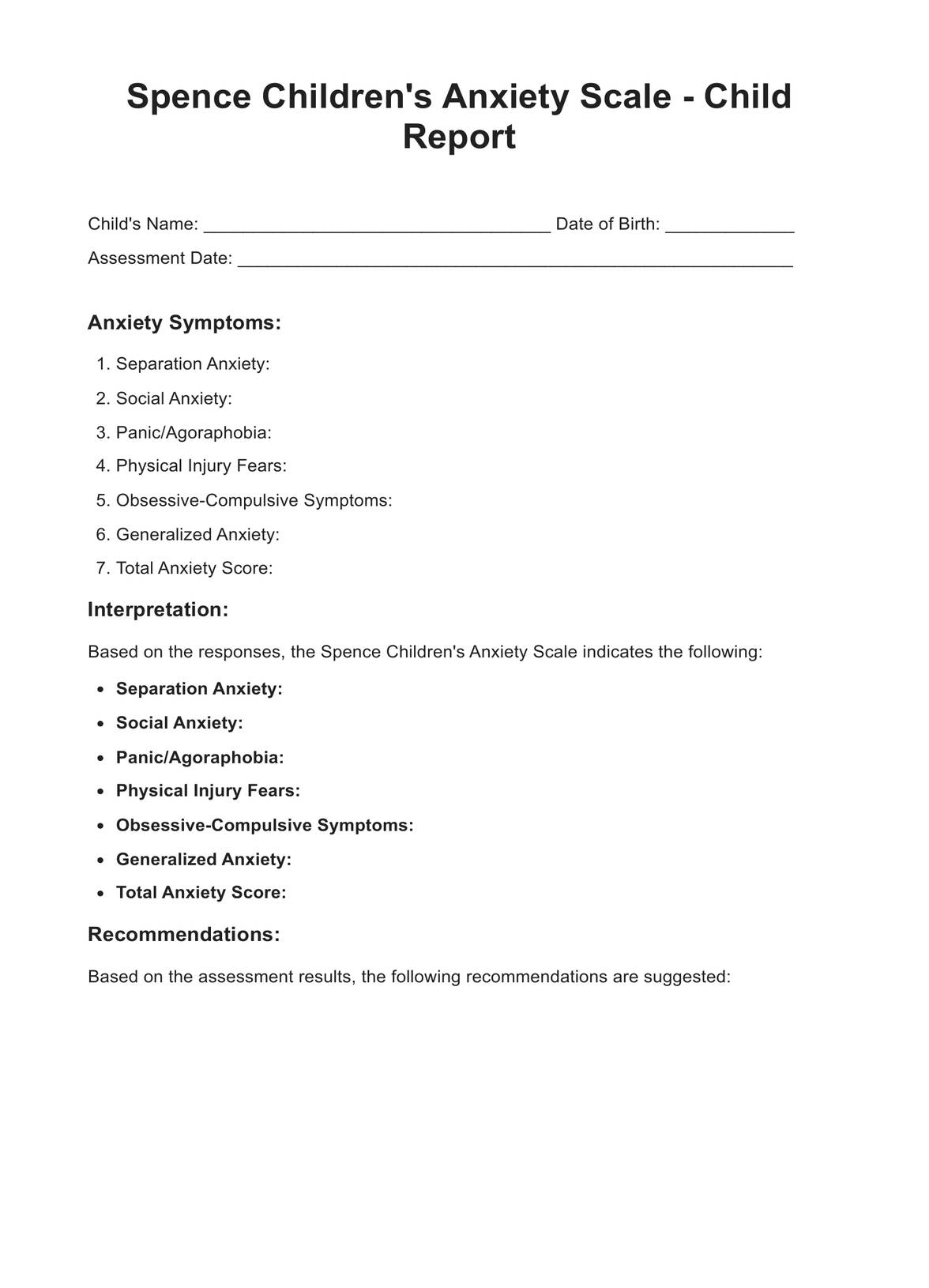
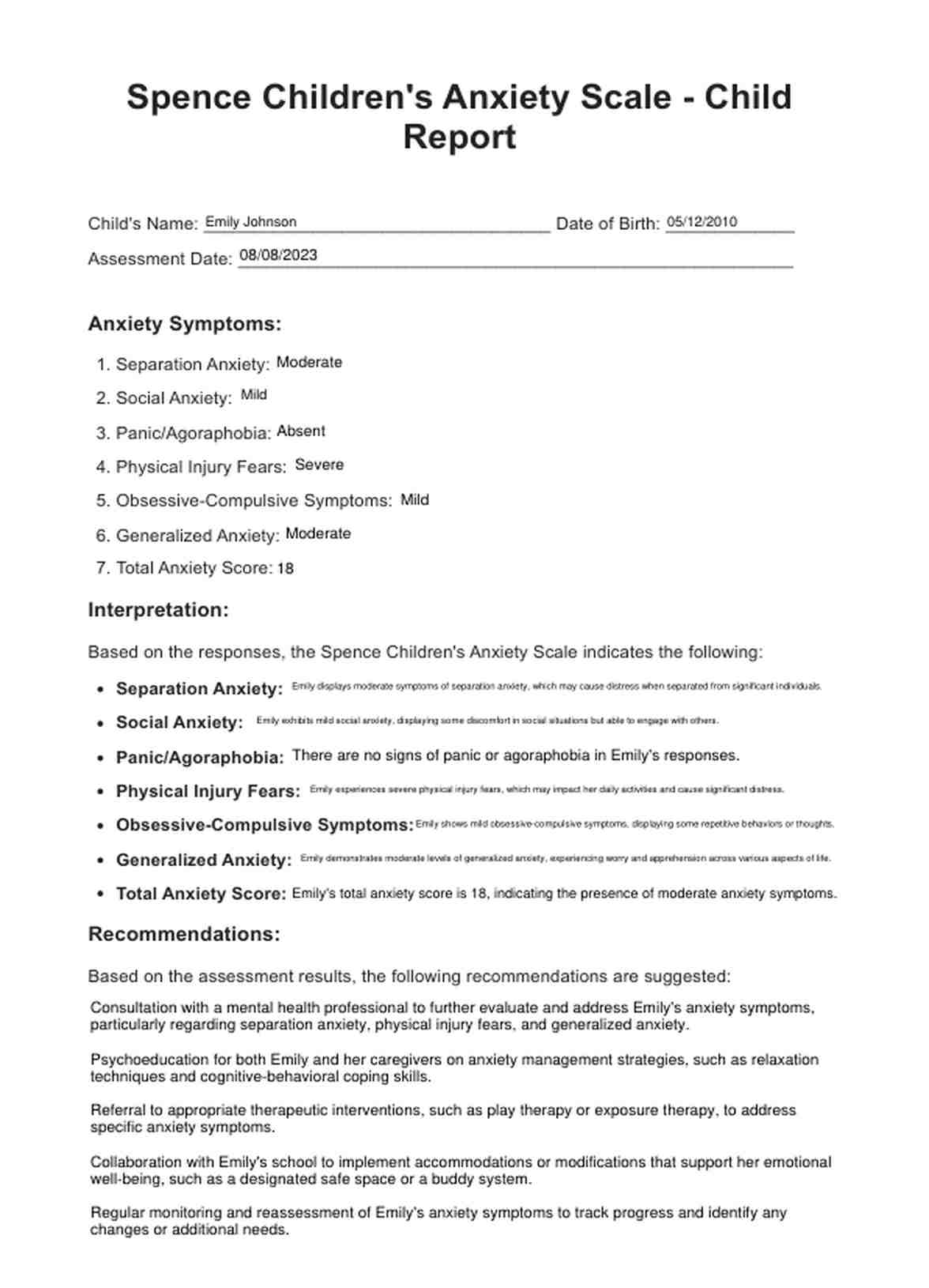

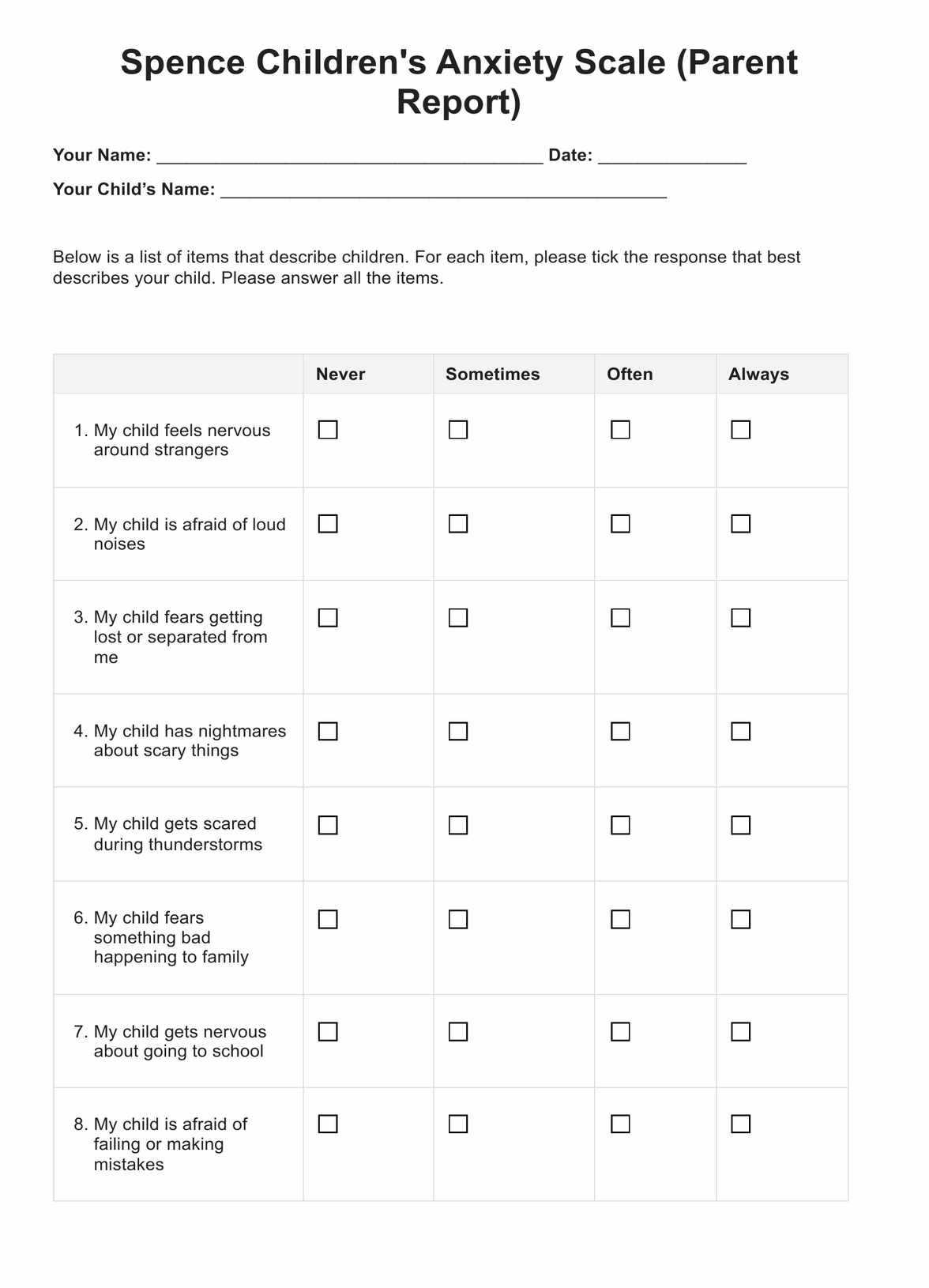












-template.jpg)






























































































